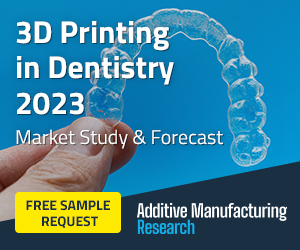 Quality control is a necessity in manufacturing, but it’s not always easy – especially when it comes to advanced manufacturing techniques, which can result in complex internal geometries that aren’t readily accessible for testing. When that occurs, quality testing often results in destruction to the part. That’s especially a problem when it comes to high-added value products, but quality testing is still a necessity in order to provide customers with the best possible product.
Quality control is a necessity in manufacturing, but it’s not always easy – especially when it comes to advanced manufacturing techniques, which can result in complex internal geometries that aren’t readily accessible for testing. When that occurs, quality testing often results in destruction to the part. That’s especially a problem when it comes to high-added value products, but quality testing is still a necessity in order to provide customers with the best possible product.
One solution is computer tomography (CT) technology, which allows internal structures to be visible without breaking open an object. The technology does have its limitations, however, so a European Union-funded project called INTERAQCT is working to improve it. The project is focusing particularly on 3D printed, composite and multi-material parts for more reliable measurement and defect detection.
The 15 researchers were able to improve verification procedures for acceptance testing of new CT equipment, as well as to enhance a method to determine misalignments in CT systems, including software compensation, which reduced measurement errors. They were also able to use CT to minimize porosity in 3D printed parts.
Technology like 3D printing has many benefits, allowing for increased customization potential, complexity, and low weight. Quality testing methods haven’t quite caught up with it, however.
“Parts often have complex internal structures to combine high strength and stiffness, with low weight,” said INTERAQCT project coordinator Professor Wim Dewulf. “Since these are not accessible to conventional quality inspection instruments, they can only be inspected by being opened destructively, after which the part needs to be made again, hopefully with similar quality.”
CT technology takes X-ray images from a number of perspectives and then combines them to create a 3D model of an object. This allows manufacturers to reconstruct the interior of the object without physically accessing it.
For the INTERAQCT project, researchers were selected with a wide range of expertise including physics, dimensional metrology, material sciences, precision engineering, and manufacturing engineering, with individuals coming from European industry, academia and National Metrology Institutes. Working together, the researchers studied ways to improve on the efficiency of the CT equipment, software, non-destructive testing, dimensional metrology, additive manufacturing, micro-manufacturing and composite manufacturing.“X-ray CT opens an unprecedented wealth of opportunities for non-destructive quality control, for example we can now measure the dimensions of complex internal structures, we can check whether the fibres inside a composite are correctly oriented and we can detect internal material defects, such as cracks and pores,” said Dewulf. “We can even do all of these at the same time.”
Widespread acceptance of advanced manufacturing techniques such as 3D printing depends on the ability to certify the quality of components made using these techniques.
“This remains a major challenge, since quality depends on internal structures and features that cannot be inspected by conventional means,” said Dewulf. “By improving X-ray CT based quality inspection, INTERAQCT has contributed an increased acceptance of these novel manufacturing methods in industry.”
CT scans are still largely performed offline, requiring expert input when a new object is scanned. The INTERAQCT team is currently working to make industrial CT fast, autonomous, robust and fully integrated.
“The vision is to integrate CT in a manufacturing environment in a way that allows 100% quality control of all parts made, and to use all CT scanning data to automatically adapt and improve the production process,” said Dewulf.
Discuss this and other 3D printing topics at 3DPrintBoard.com or share your thoughts below.
Subscribe to Our Email Newsletter
Stay up-to-date on all the latest news from the 3D printing industry and receive information and offers from third party vendors.
You May Also Like
3D Printing Financials: Fathom Struggles in Financial Quicksand During Critical Transition
Facing a year of key transitions and financial pressures, Fathom (Nasdaq: FTHM) has filed its annual report for 2023 with the U.S. Securities and Exchange Commission (SEC). The document outlines...
Latest Earnings Overview for Australian 3D Printing Firms Titomic and AML3D
Australian 3D printing manufacturing firms Titomic (ASX: TTT) and AML3D (ASX: AL3) reported their financial results for the period from July to December 2023, marking the first half of their...
3D Printing Webinar and Event Roundup: April 7, 2024
Webinars and events in the 3D printing industry are picking back up this week! Sea-Air-Space is coming to Maryland, and SAE International is sponsoring a 3D Systems webinar about 3D...
3D Printing Financials: Unpacking Farsoon and BLT’s 2023 Performance
In the Chinese 3D printing industry, two companies, Farsoon (SHA: 688433) and Bright Laser Technologies, or BLT (SHA: 688333), have recently unveiled their full-year earnings for 2023. Farsoon reported increases...

































